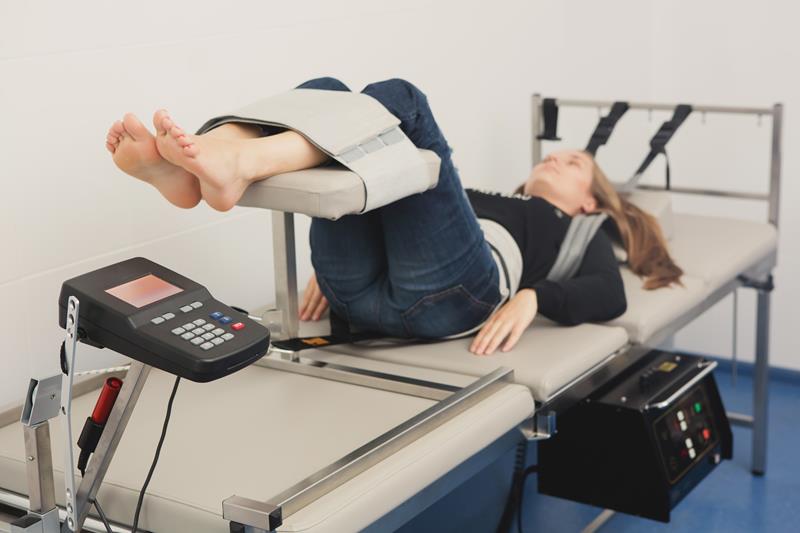
Welcome to our Dickinson medical and chiropractic wellness blog! We believe wellness education is key to healthy living. Please consider bookmarking our blog page because we will post to our blog weekly and are confident that you will discover it to be both interesting and educational. Today, let’s talk about the mitigating pain via spinal traction.
Spinal traction is a therapeutic technique used to treat various spinal conditions by gently stretching the spine and relieving pressure on the spinal discs, nerves, and surrounding structures. In Dickinson’s Wellness First Medical Center, spinal traction is employed to alleviate pain, improve spinal alignment, and promote the healing of certain spinal conditions.
There are different methods and devices used for spinal traction, but the underlying principle is to create a controlled and gradual separation between the vertebrae.
Here’s how spinal traction works:
Decompression of Spinal Structures
Spinal traction aims to create space between the vertebrae. This separation can help to decompress the intervertebral discs, which are the soft, gel-like cushions between the spinal bones (vertebrae). Over time, due to factors like poor posture, injury, or aging, these discs can become compressed, leading to conditions like herniated discs or spinal stenosis. Traction gently pulls the vertebrae apart, which can reduce pressure on the discs, nerves, and other structures in the spine.
Reducing Nerve Impingement
When spinal structures, such as herniated discs or bone spurs, compress nearby nerves, it can cause pain, numbness, and other neurological symptoms. By creating space between the vertebrae, spinal traction can help alleviate the pressure on these nerves, reducing symptoms and allowing for better nerve function.
Increasing Circulation and Nutrient Supply
Traction can enhance blood flow to the spinal area. Improved circulation brings essential nutrients and oxygen to the discs and surrounding tissues, supporting the healing process. Additionally, waste products and inflammation can be more effectively carried away from the area.
Stretching and Relaxing Muscles
Muscles surrounding the spine can become tense and tight due to spinal misalignment or injury. Spinal traction can help relax these muscles by gently stretching them, promoting a more balanced and relaxed muscle tone. Relaxed muscles can contribute to reduced pain and improved spinal alignment.
Variations in Traction Techniques
Spinal traction can be administered in different ways. Some common methods include:
- Mechanical Traction: This involves the use of specialized equipment to apply a controlled pulling force to the spine. Devices like traction tables, harnesses, and pulleys can be used to create the necessary traction force.
- Manual Traction: In this approach, a skilled healthcare provider uses their hands to apply gentle and controlled force to the spine. This method allows for more specific adjustments based on the patient’s condition and response.
- Inversion Therapy: Inversion tables allow the patient to be suspended upside down, creating a natural form of traction due to the force of gravity. This technique is thought to decompress the spine and relieve pressure on discs and nerves.
Spinal traction is a therapeutic technique designed to alleviate pain, improve spinal alignment, and promote healing by creating space between the vertebrae. By reducing pressure on spinal discs and nerves, increasing circulation, and relaxing muscles, spinal traction can be a valuable component of treatment plans for various spinal conditions.
If you think spinal traction can help improve your condition, contact Wellness First Medical Center.
